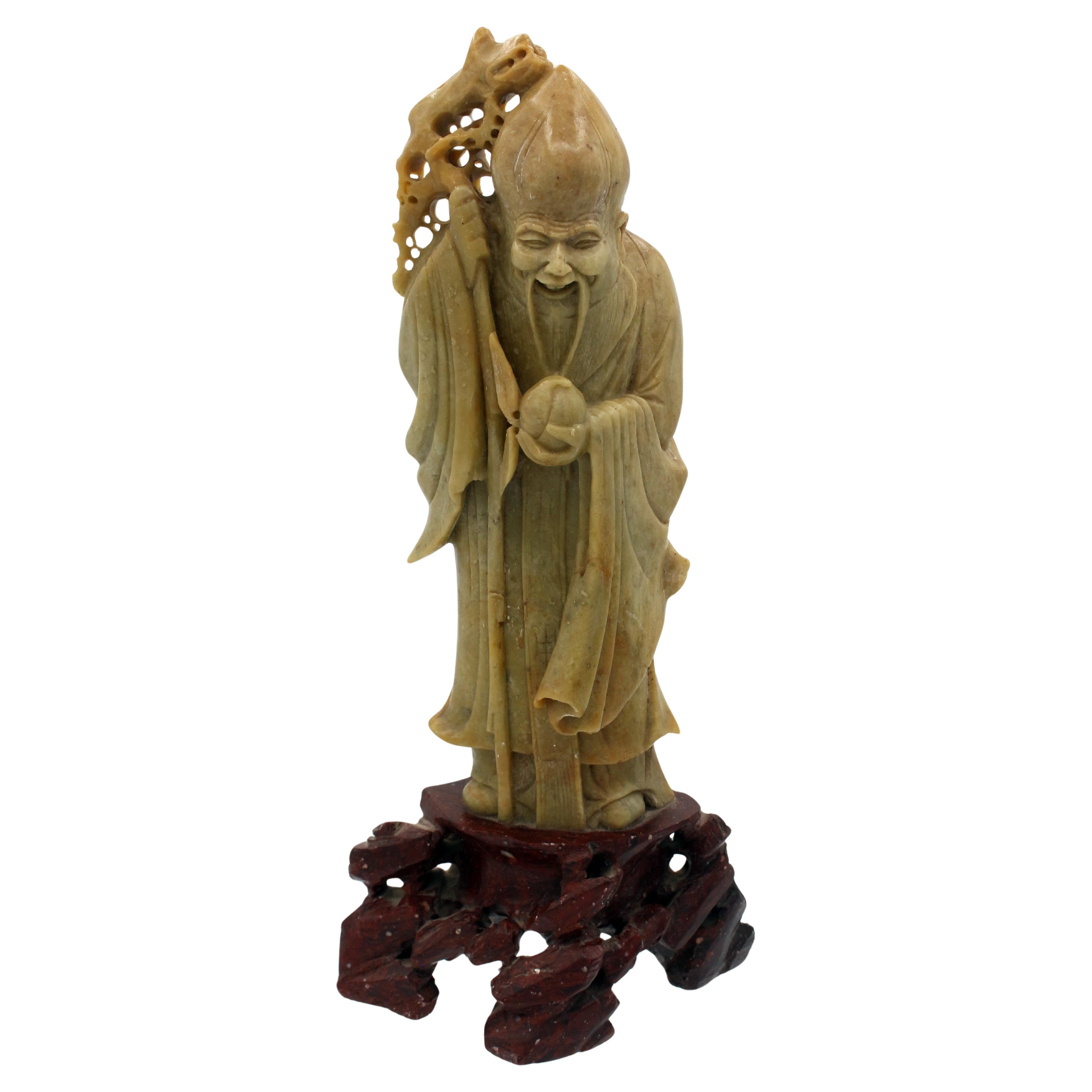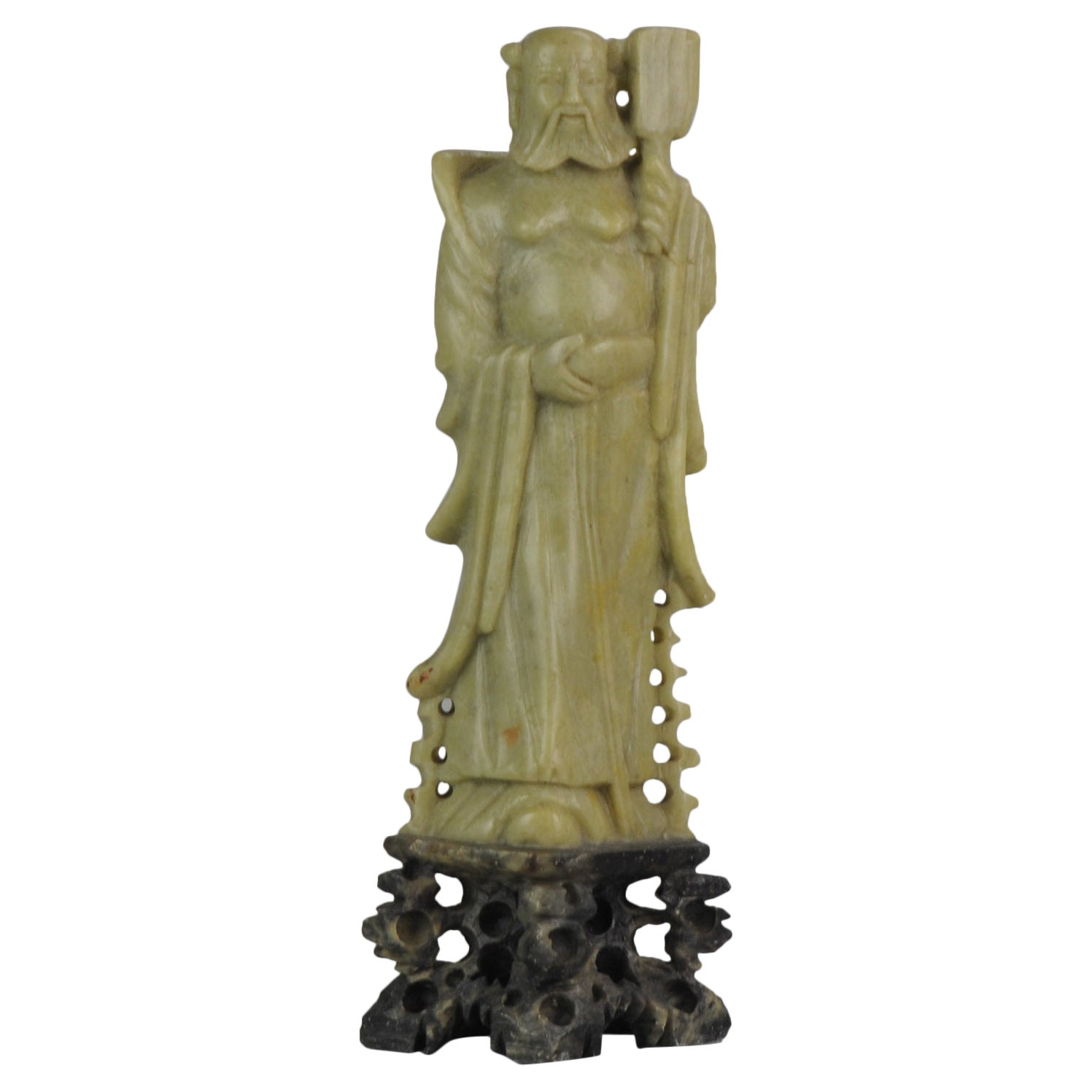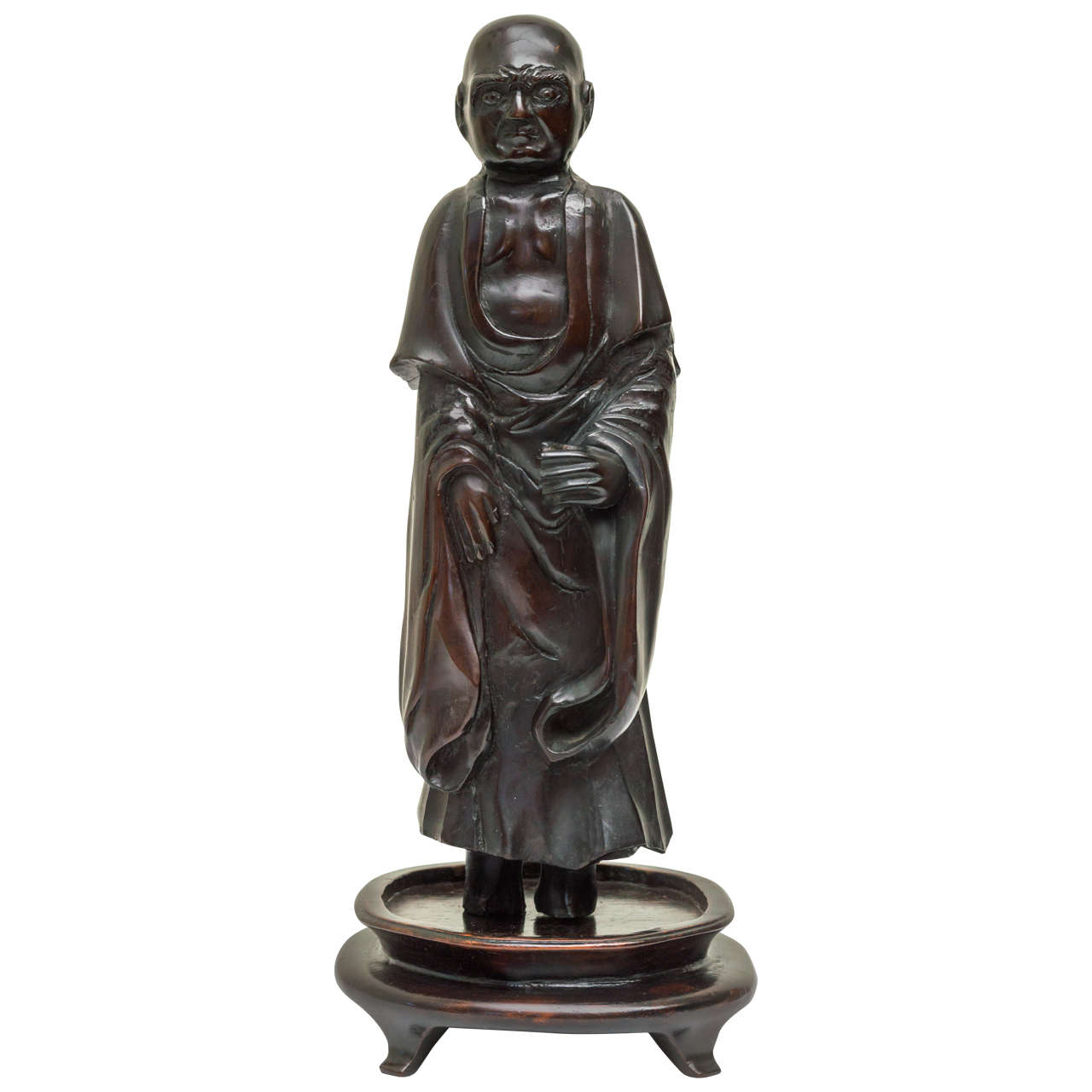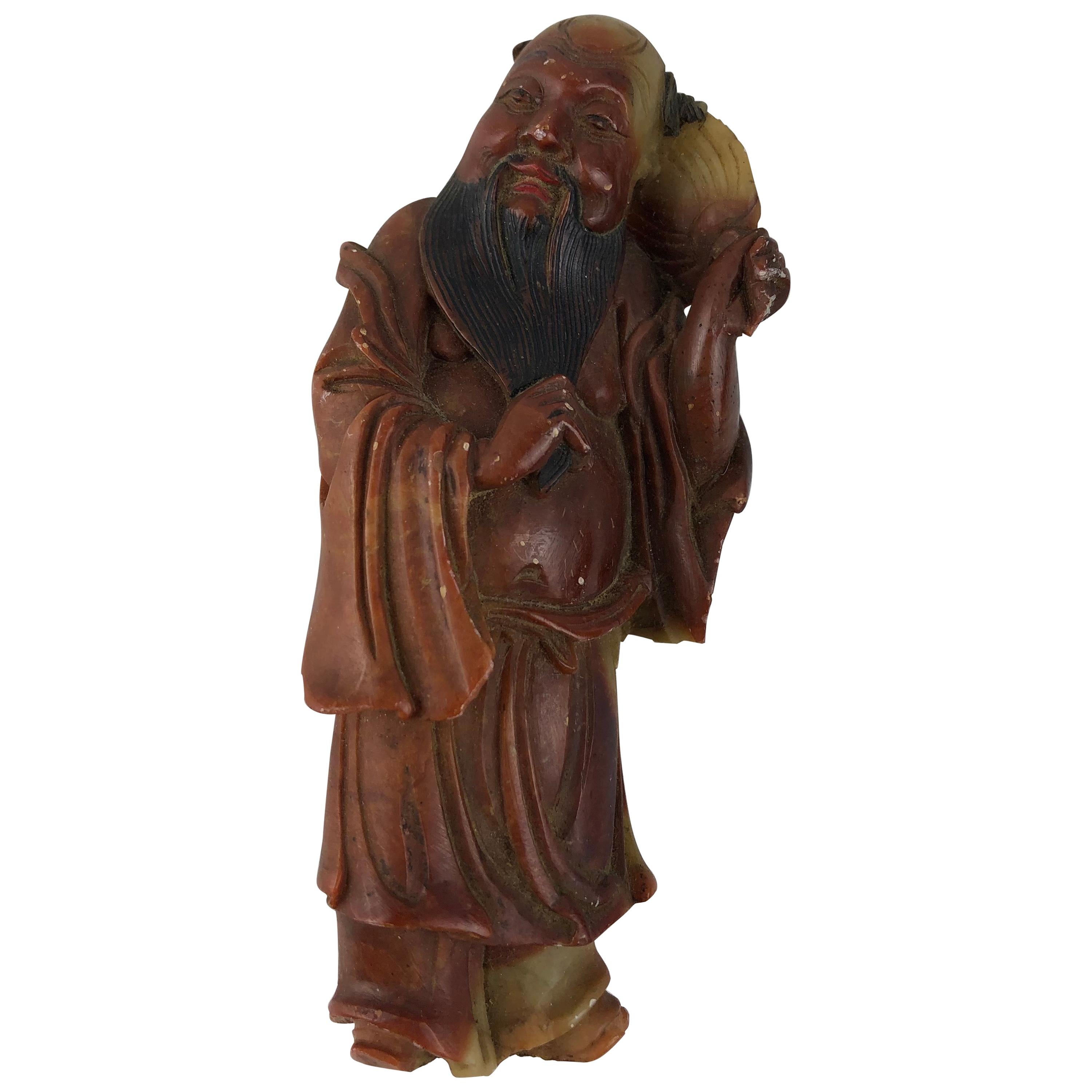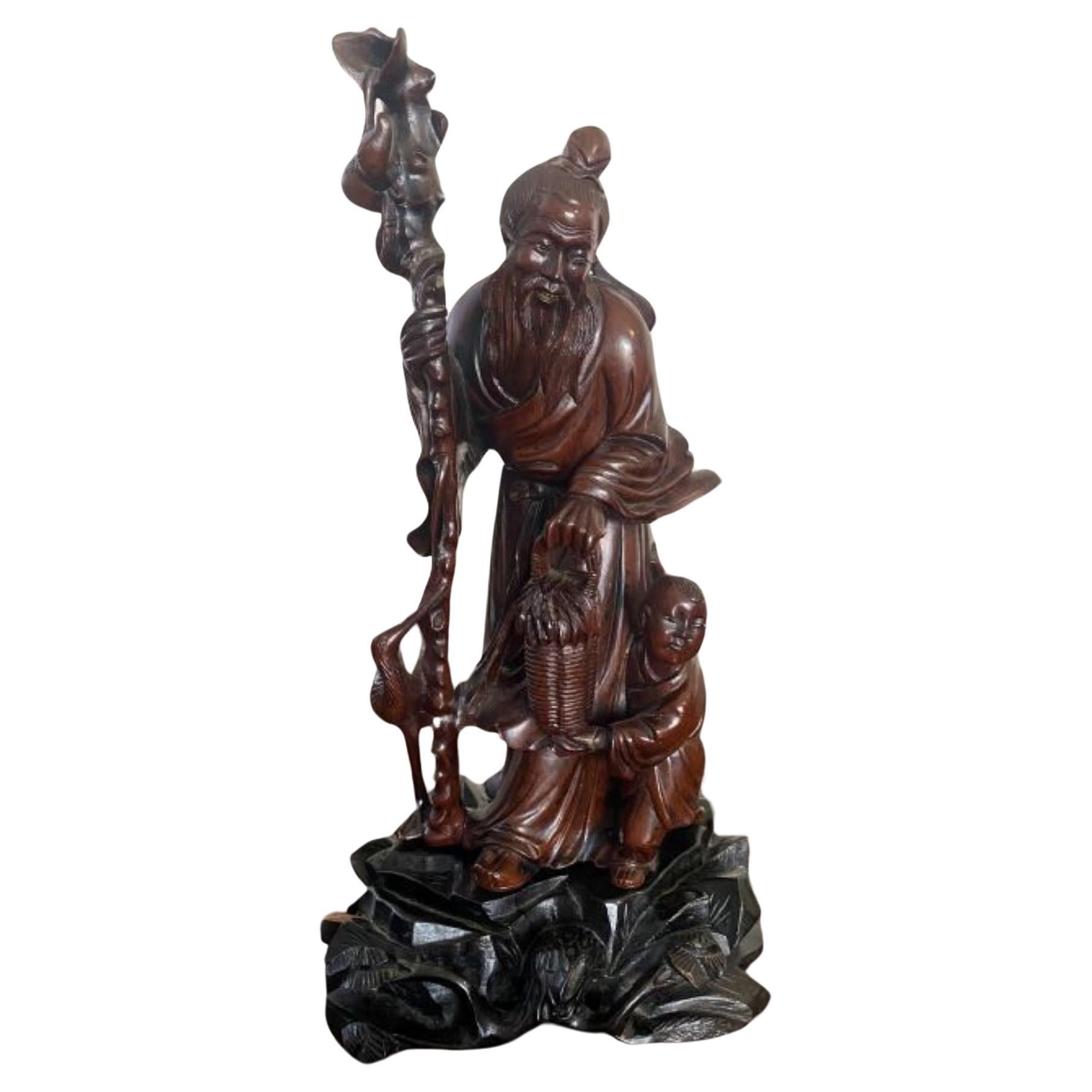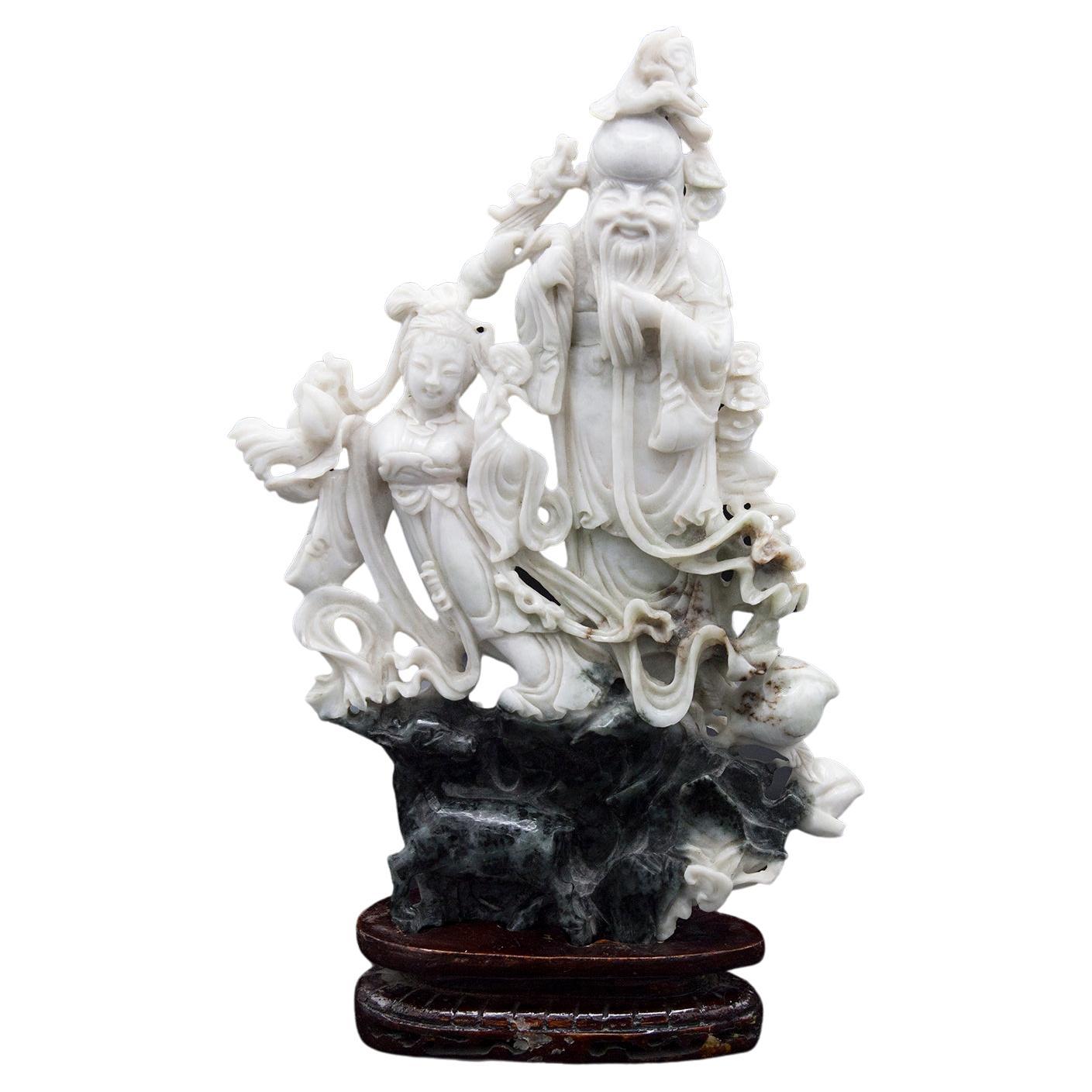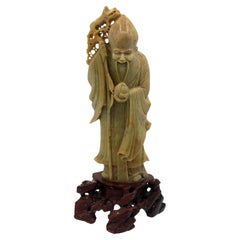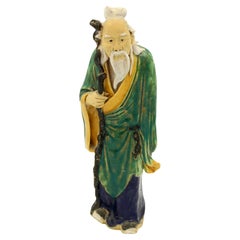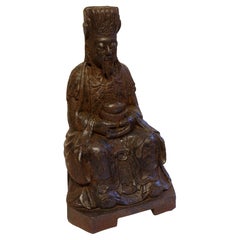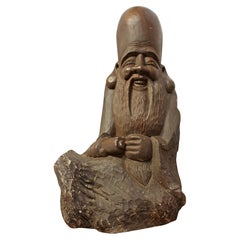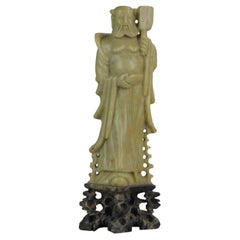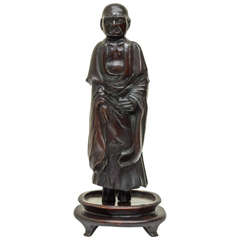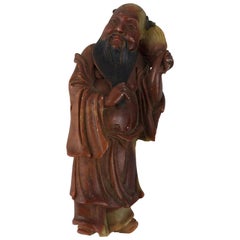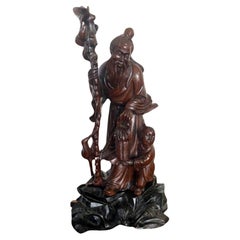Items Similar to Late Qing, Pre-1891 Chinese Carved Soapstone Figure
Want more images or videos?
Request additional images or videos from the seller
1 of 8
Late Qing, Pre-1891 Chinese Carved Soapstone Figure
$225
£170.85
€195.38
CA$314.36
A$349.63
CHF 182.57
MX$4,254.68
NOK 2,331.67
SEK 2,186.70
DKK 1,458.18
Shipping
Retrieving quote...The 1stDibs Promise:
Authenticity Guarantee,
Money-Back Guarantee,
24-Hour Cancellation
About the Item
Late Qing, pre-1891 carved soapstone figure, Chinese. Elegantly carved of a wise man holding a baby & a peach on a carved rocky outcropping soapstone attached stand. Unmarked.
7 5/8" h., 3 1/8" x 2 1/8".
We are a family business that has been a major source for the selective buyer for over 90 years. We are one the finest antiques shop in the South and Mid-Atlantic, proclaimed the “Best Antiques Shop in the Mid-Atlantic” by Mid-Atlantic Antiques Magazine. With over 7,500 square feet of show room space in an impressive Italianate Villa setting, Whitehall is a must visit spot for antiques collectors, dealers and decorators alike!
We specialize in period 18th and 19th century English and Country French furniture, fine art, silver, porcelain, lighting, and all appropriate decorative accessories. You will also find pieces of American origin, from Continental Europe, Asia, and the Middle East and ranging in date and style from Baroque to Mid-Century Modern. In short, we are a treasure trove of unique items with an unprecedented selection for your home or collection!
- Dimensions:Height: 7.63 in (19.39 cm)Width: 3.13 in (7.96 cm)Depth: 2.13 in (5.42 cm)
- Style:Qing (Of the Period)
- Materials and Techniques:
- Place of Origin:
- Period:
- Date of Manufacture:Late Qing, Pre-1891
- Condition:Wear consistent with age and use. Condition commensurate with age and use.
- Seller Location:Chapel Hill, NC
- Reference Number:Seller: WCO-3723z1stDibs: LU6458244758332
About the Seller
4.9
Platinum Seller
Premium sellers with a 4.7+ rating and 24-hour response times
Established in 1930
1stDibs seller since 2022
322 sales on 1stDibs
Typical response time: 1 hour
- ShippingRetrieving quote...Shipping from: Chapel Hill, NC
- Return Policy
Authenticity Guarantee
In the unlikely event there’s an issue with an item’s authenticity, contact us within 1 year for a full refund. DetailsMoney-Back Guarantee
If your item is not as described, is damaged in transit, or does not arrive, contact us within 7 days for a full refund. Details24-Hour Cancellation
You have a 24-hour grace period in which to reconsider your purchase, with no questions asked.Vetted Professional Sellers
Our world-class sellers must adhere to strict standards for service and quality, maintaining the integrity of our listings.Price-Match Guarantee
If you find that a seller listed the same item for a lower price elsewhere, we’ll match it.Trusted Global Delivery
Our best-in-class carrier network provides specialized shipping options worldwide, including custom delivery.More From This Seller
View Allc. 1900 Chinese Soapstone Figure of Shouxing, God of Longevity
Located in Chapel Hill, NC
Circa 1900 Chinese soapstone figure of Shouxing, God of Longevity. Well carved holding a peach and long staff. On attached soapstone carved outcropping base (old break & repair visib...
Category
Early 20th Century Chinese Chinese Export Sculptures and Carvings
Materials
Soapstone
1892-1904 Chinese Elder Figure With Staff
Located in Chapel Hill, NC
1892-1904 large Chinese mud man figure, an elder with staff in flowing green & yellow robe. Stamped "China". Apparent losses to feet, but possibly from kil...
Category
Antique Late 19th Century Chinese Chinese Export Figurative Sculptures
Materials
Pottery
$195 Sale Price
33% Off
Mid-19th Century Chinese Cast Iron Seated Figure
Located in Chapel Hill, NC
Mid-19th century Chinese cast iron seated figure. Chinese seated figure in official robes & head-dress, an immortal in Taoism & mythology. Probab...
Category
Antique Mid-19th Century Chinese Qing Sculptures and Carvings
Materials
Iron
Mid-20th Century English or Chinese Export Cast Stone Figure
Located in Chapel Hill, NC
Mid-20th Century English or Chinese Export Cast Stone Figure of the God of Longevity. Bronzed finish, somewhat degraded. A delightful piece to be used in the outdoors of in. The figu...
Category
Mid-20th Century Unknown Statues
Materials
Stone
1891-1911 Chinese World's Fair Souvenir Mud Man Figure
Located in Chapel Hill, NC
1891-1911 Chinese World's Fair Souvenir Mud Man Figure. Wonderfully expressive face; dressed in green robe with yellow trim. He carries a shoulder yoke with giant peach on one side a...
Category
Antique Late 19th Century Chinese Figurative Sculptures
Materials
Ceramic
Late 19th Century Chinese Qingtian Stone (Soapstone) Carved Scholar's Brush Rest
Located in Chapel Hill, NC
Late 19th century Qingtian stone (soapstone) carved scholar's brush rest, Chinese. A landscape carving depicting tea houses among pine trees by a lake with mountains behind. Contrast...
Category
Antique Late 19th Century Chinese Qing Sculptures and Carvings
Materials
Soapstone
You May Also Like
Lovely Qing Dynasty Chinese Soapstone Statue Nicely Carved Wise Man
Located in Amsterdam, Noord Holland
Lovely Chinese Statue. The artist really did it's best on this one.
Additional information:
Material: Soapstone
Type: Statues
Region of Origin: China
Period: ca 1900 Qing (1661 - 1...
Category
Antique 19th Century Chinese Figurative Sculptures
Materials
Soapstone
$669 Sale Price
20% Off
Early 18th Century Chinese Qing Period Carved Lohan Figure
Located in San Francisco, CA
Early 18th century Chinese Qing period carved Lohan figure in draped robes. Very finely carved heavy dark rosewood. The aged surface patina with tight gra...
Category
Antique Early 18th Century Chinese Qing Sculptures
Materials
Rosewood
Hand Carved Chinese Figurative Statue or Sculpture, Marble
Located in Miami, FL
Artfully carved from amber colored marble this figurative Chinese statue or sculpture
stands 4 1/8" H x 1 3/4" w x 1 1/8" D.
Although this piece shows age appropriate wear, it ...
Category
20th Century Chinese Figurative Sculptures
Materials
Marble
$440 Sale Price
20% Off
Quality antique Chinese carved hardwood figure
Located in Ipswich, GB
Quality antique Chinese carved hardwood figure of a shoulou with a staff, attendant child and a stork standing on a carved base
Category
Early 20th Century Chinese Sculptures and Carvings
Materials
Hardwood
Chinese Jade Statue of a Confucian Sage
Located in Milano, IT
Splendid statue made of jade in the typically Chinese 19th century.
The statue is very beautiful and rests on an oval base made of very fine dark wood. The lower part of the statue ...
Category
Antique Early 1800s Chinese Chinese Export Sculptures and Carvings
Materials
Jade
$2,396 Sale Price
20% Off
Ming Dynasty Carved Ancestor Figure
Located in Chicago, IL
Marvel at the exquisite artistry of this carved wood Chinese Ming Dynasty (1368 to 1644) ancestor figure—a captivating depiction of a seated man adorned in the distinguished attire o...
Category
Antique 17th Century Chinese Ming Figurative Sculptures
Materials
Wood
$3,375 Sale Price
25% Off
More Ways To Browse
Baroque China
Chinese Qing Figure
Carved Soapstone
Peach Sculpture
Baby China
Chinese Soapstone
Soapstone Chinese Furniture
Antique Soapstone
Continental China
Porcelain Baby
Antique Baby Items
Asian Man Carving
Antique Carved Soapstone
Carved Asian Man Sculpture
Chinese Soapstone Sculpture
Chinese Soapstone Carving
Antique Soapstone Carvings
Chinese Antique Sculpture Soapstone
